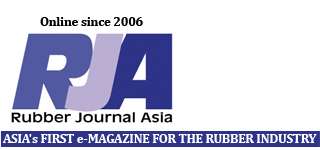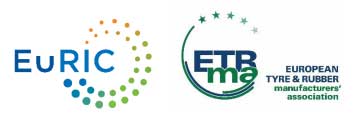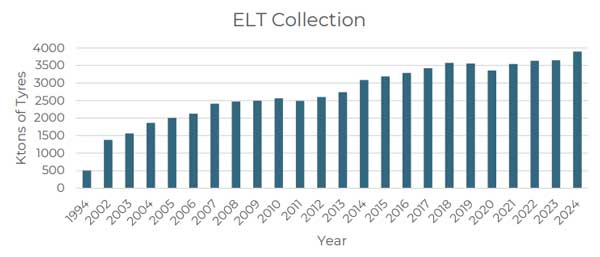ETRMA, the European Tyre and Rubber Manufacturers’ Association and EuRIC, the European Recycling Industries’ Confederation have recently issued a joined paper calling on the European Commission to urgently develop EU-wide End-of-Waste (EoW) criteria for rubber derived from End-of-Life Tyres (ELTs) to facilitate cross-border trade in the EU and increase the use of recycled materials in manufacturing.
In the joint position paper titled “Harmonised End-of-Waste criteria: A key step to strengthening Europe’s tyre recycling market”, EuRIC and ETRMA stress that the lack of harmonised EoW criteria creates legal and administrative barriers across Member States, undermining market confidence and limiting recycled materials uptake.
Despite being identified by the Joint Research Centre in 2021 as a top candidate for EoW criteria, progress has stalled. The establishment of harmonised EoW rules would clarify when ELT-derived rubber is no longer considered waste, ensuring compliance with product legislation, improving quality assurance, and enabling circular procurement at scale.
“Technical conditions for ELT rubber to cease being waste are well defined. What’s missing is legal certainty. EU-wide EoW criteria are essential to unlock intra-EU trade, investment, and circular use of recycled rubber,” said Julia Ettinger, Secretary General of EuRIC.
“Standardised End-of-Waste criteria will boost demand for high-quality secondary raw materials and reduce dependence on virgin resources,” said Adam McCarthy, Secretary General of ETRMA. “These standards will support the uptake of recycled inputs in tyre manufacturing, thus supporting the objectives of the Ecodesign for Sustainable Products Regulation (ESPR).”
The tyre value chain is aligned and ready to support the Commission in defining workable, enforceable EoW rules under the Waste Framework Directive to safeguard valuable resources and ensure the development of a well-functioning internal market for recycled materials in the EU.
The development of end-of-waste criteria, which specify when waste ceases to be waste and becomes a product, is crucial to boost the use of recycled materials and to develop a well functioning internal market for those materials in the EU. The WFD sets specific criteria in its article 6.
Back in 2021, EuRIC, the European Recycling Industries’ Confederation, together with the ETRMA published a report, prepared by AECOM, on the assessment of the WFD end-of-waste criteria for end-of-life tyre rubber.
In 2024 around 3.9 million tonnes of ELT have been collected and made available for treatment. Approximately half of the tyres are recycled into rubber, steel, and textile fibres. The other half is destined for co-incineration in the cement industry. Moreover, up to a third of the treatment of ELTs occurs outside of Europe. The rates of collection have increased slightly over the years; however, recycling rates have remained stable. Action is needed if the tyre recycling sector is expected to adapt to the projected rise of ELT treatment in Europe, they add.
The associations say that securing a common framework for rubber from ELTs to cease being classified as waste is essential. This can only be achieved through harmonised European EoW criteria, applicable across all Member States and in the form of a binding legal text. This will build market trust, increase investors’ security and stimulate R&D into innovative solutions for this valuable material.


